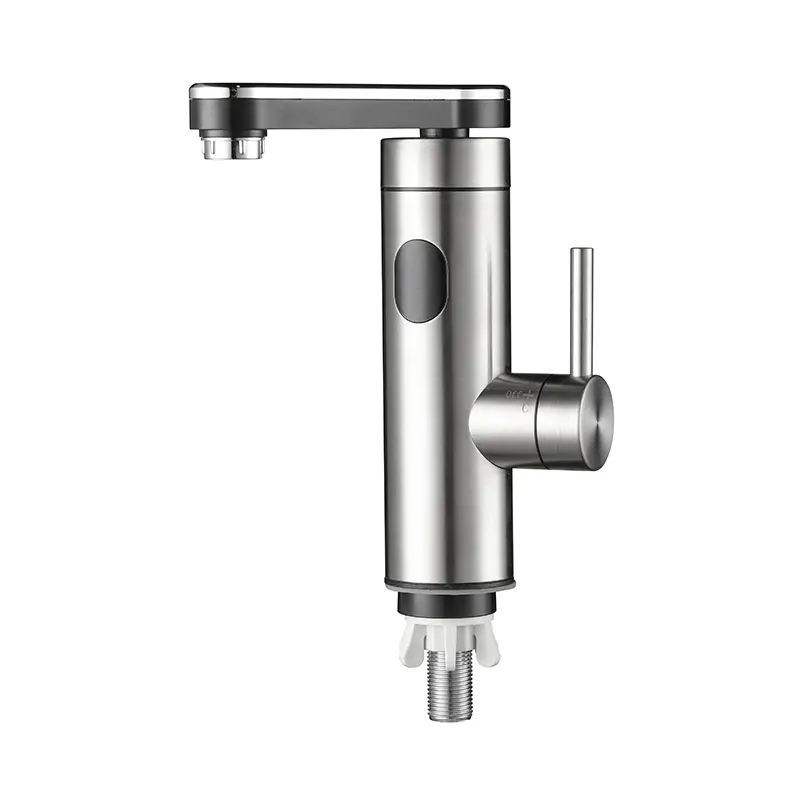As the demand for convenience and space efficiency at home grows, the pain points of traditional storage water heaters, such as long wait times and large space requirements, are becoming increasingly prominent. Electric instant hot water faucets, with their instant heating and compact design, are becoming a new hot water solution option for kitchens, bathrooms, and other environments. Their four core advantages precisely meet daily hot water needs, bringing efficient and hassle-free hot water experiences to household users.

The most core advantage of electric instant hot water faucets is "no preheating required"—hot water flows out within 3-5 seconds of turning on the faucet, perfectly solving the problem of traditional water heaters that require "draining cold water and waiting for heating":
In the kitchen, there’s no need to wait for water storage and heating when washing vegetables or dishes. Turn on the faucet, and hot water at an appropriate temperature (30-55℃ adjustable) is available immediately. This is especially useful in winter to avoid frostbite from cold water on hands;
For morning skincare or evening makeup removal in the bathroom, there’s no need to turn on the water heater in advance. Instant hot water is available whenever needed, adapting to fast-paced home life and reducing unnecessary time waste.
Electric instant hot water faucets are compact (they are only a little bigger than ordinary faucets). They don’t need special water storage space. So installing them is much more convenient than installing traditional water heaters.
For example, in small kitchens or bathrooms with little space, you don’t need to save space for a water storage tank. The faucet can be directly installed by replacing the original ordinary faucet, without affecting the layout of cabinets or washbasins;
Some models support wall-mounted or countertop installation, allowing flexible selection based on water usage points. For example, installing one at the laundry sink on the balcony meets hot water needs for laundry or watering plants, without the need to modify the entire home’s water pipeline.
Traditional storage water heaters need repeated heating and heat preservation, which easily causes energy waste. In contrast, electric instant hot water faucets adopt an "on-demand heating" mode, offering significant energy-saving advantages:
Heating is only activated when hot water is used, and power consumption stops immediately when the faucet is turned off. This avoids energy loss during water storage and heat preservation, making it particularly suitable for scenarios with low water usage frequency and small single water consumption (such as washing vegetables in the kitchen);
Some new models are equipped with smart temperature control chips, which can precisely control the outlet water temperature, avoiding extra power consumption caused by excessively high temperatures. Long-term use can save a considerable amount of electricity costs for families.
As water-related electrical appliances, safety design is crucial for electric instant hot water faucets. Currently, mainstream products are equipped with multiple protection mechanisms:
Built-in leakage protection devices (such as leakage protection plugs and water-electricity separation structures) can cut off the power within 0.1 seconds to avoid electric shock risks;
Some products also add dry-heating protection and over-temperature protection. They automatically shut down when the faucet is short of water or the water temperature is too high, making them suitable for use by the elderly and children and eliminating safety concerns about home water usage.
| Core Advantages | Core Value | Suitable Scenarios | Traditional Pain Points Addressed |
|---|---|---|---|
| Instant Hot Water | No preheating, hot water on demand | Kitchen vegetable/dish washing, bathroom skincare/makeup removal | Long waiting times for storage water heaters, draining cold water |
| Space-Saving & Easy Installation | Compact and flexible, no water storage space needed | Small kitchens, balcony laundry sinks | Large space occupied by water storage tanks, complicated installation |
| Energy-Efficient & Low Consumption | On-demand heating, reduced energy waste | Low-frequency, small single water consumption scenarios | High energy consumption from heat preservation, high costs |
| Safety Protection | Multiple safeguards, avoiding electric shock risks | Family use (including the elderly and children) | Electric leakage hazards of water-related appliances, dry-heating risks |
Currently, electric instant hot water faucets are evolving toward "intelligence and humanization": Some products support remote reservation for heating via mobile APP and memory of frequently used water temperatures; others come with digital display screens that show the outlet water temperature in real time, further enhancing the user experience. As a "convenient tool" for instant home hot water, their four core advantages continue to meet the diverse hot water needs of families, making them a practical item for modern home life.